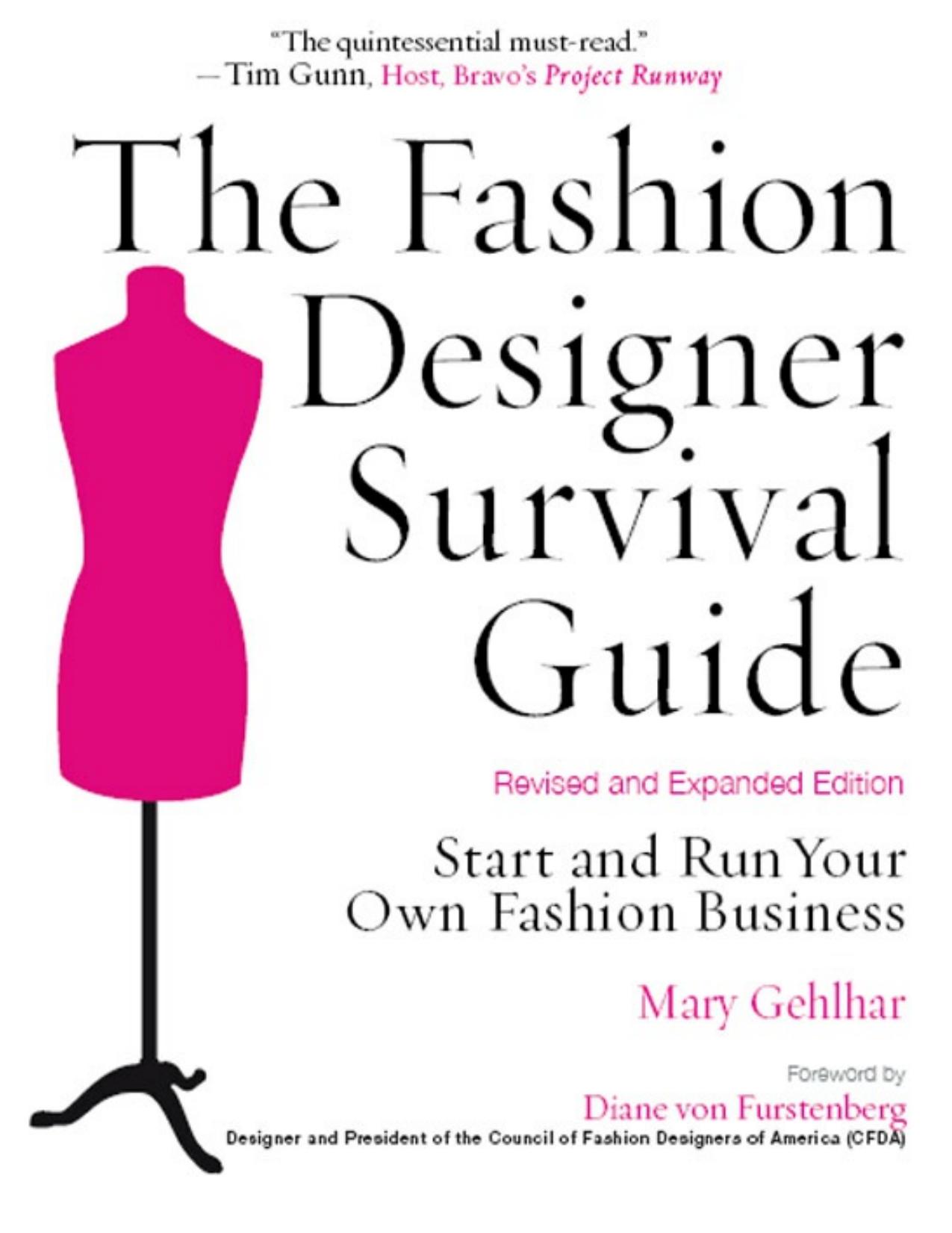The Fashion Designer Survival Guide by Mary Gehlhar

Author:Mary Gehlhar
Language: eng
Format: epub, pdf
Tags: ebook, book
Publisher: Kaplan Publishing
Published: 2008-11-11T05:00:00+00:00
Understand the price range for your market. Before you establish price, compare the items in your line with similar collections to establish a range that makes sense in the marketplace. Even established designers send employees to the stores regularly to research the price of competitive items and use that as a guide for their own product. If a designer is starting to produce leather coats, she will search for a leather coat that is similar in quality and image and plan to price in the same general range.
Many new designers are positioning their product in the contemporary market alongside brands such as Rebecca Taylor and Catherine Malandrino. This positioning requires high quality at a lower price point, which you must be able to sustain from season to season.
Be ready to explain your price point to the buyer and how the qualities of the fabric, production, and construction define the cost. Never underprice your product to get into certain stores. Stores buy you to fit a certain price point, and you can’t adjust that later. the loss you take from underpricing will only accumulate as your orders grow.
Covering your costs. One of the biggest mistakes new designers make is not charging enough to cover their costs, much less provide a profit. the price must cover the cost of goods sold, as well as all other indirect expenses.
Cost of goods sold (COGS) includes all expenses related to producing the items ordered by the stores. This covers the obvious expenses tracked throughout production, such as buttons, zippers, marking, grading, fabric, construction, and shipping.
Indirect costs include design and development costs and sales, as well as general and administrative costs. Design and development costs include all the expenses of the sample collection, such as fabrics and first patterns, as well as research and development expenses, such as trips to fabric shows. Remember to account for your own labor if you make the patterns or samples; otherwise, the pricing won’t cover your costs when you start to outsource this work.
Sales, general, and administrative costs include the costs of running the business, selling, and promoting the line. These include overhead, including rent, bookkeeping, salaries, and telephone; sales expenses, such as lookbooks and trade shows; advertising; and public relations. Markdown allowances, discounts, returns, and canceled orders are sales expenses, and if they apply to you, your pricing must cover them.
Cost of goods sold is attributed to each specific item, but design and development costs and sales, general, and administrative costs need to be divided up and allocated across the entire collection. The process takes time, and designers become Excel wizards as they work to allocate costs correctly.
Calculating wholesale price is not an exact science and can become complex. If you work with a sales representative, ask the rep to help you. Several pricing methodologies exist, but one of the best approaches is to apply the same markup margin the retailer uses to the cost of goods sold. The markup will cover all indirect costs and provide the profit margin.
Download
The Fashion Designer Survival Guide by Mary Gehlhar.pdf
This site does not store any files on its server. We only index and link to content provided by other sites. Please contact the content providers to delete copyright contents if any and email us, we'll remove relevant links or contents immediately.
Tokyo Geek's Guide: Manga, Anime, Gaming, Cosplay, Toys, Idols & More - The Ultimate Guide to Japan's Otaku Culture by Simone Gianni(2314)
Batik by Rudolf Smend(2123)
Life of Elizabeth I by Alison Weir(2023)
The Little Book of Bettie by Tori Rodriguez & Dita von Teese(1623)
Vogue on: Dolce & Gabbana by Luke Leitch(1590)
Vogue on: Manolo Blahnik by Chloe Fox(1517)
Paris Undressed by Kathryn Kemp-Griffin(1452)
A Victorian Lady's Guide to Fashion and Beauty by Mimi Matthews(1369)
How to Dress by Alexandra Fullerton(1342)
Pretty Iconic by Sali Hughes(1317)
Indigo by Catherine E. McKinley(1261)
The Light of the World by Elizabeth Alexander(1215)
101 Things I Learned in Law School by Matthew Frederick(1175)
The Language of Fashion by Barthes Roland(1162)
Lazy Perfection by Jenny Patinkin(1148)
Fashion Victims by Alison Matthews David(1147)
Fashion Illustration 1920-1950 by Walter T. Foster(1134)
House of Versace: The Untold Story of Genius, Murder, and Survival by Ball Deborah(1123)
Face Paint: The Story of Makeup by Lisa Eldridge(1102)
